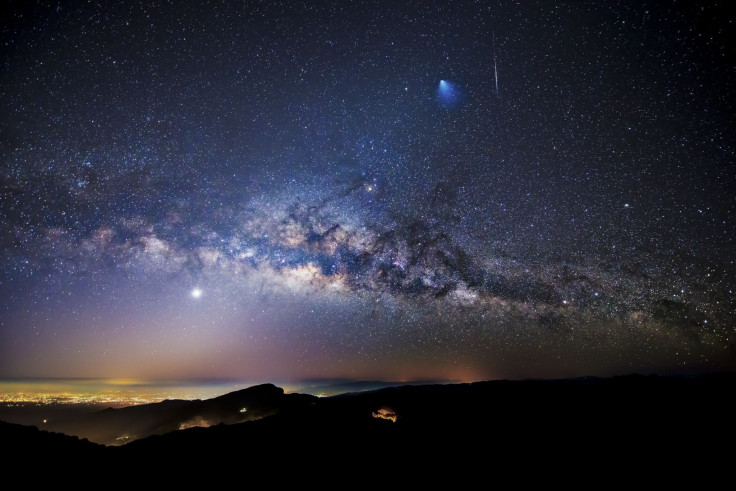May Sky Events: Look Forward To Another Eclipse And A Meteor Shower This Month
KEY POINTS
- There will be a penumbral lunar eclipse this month
- The eta Aquariids, known for their speed, will have their peak from May 5 to 6
- The new moon on the 19th will provide moonless nights perfect for skywatching
After the exciting sky events of April, May also has quite a few things in store for skywatchers. There will be another eclipse and a meteor shower as well.
May skywatching events begins with the Full Flower Moon, which will be at 1:34 p.m. EDT on May 5. However, skywatchers can start looking forward to it earlier, as it will appear full for about three days starting on Thursday morning until Sunday morning.
It's quite easy to understand why the May Full Moon is called the Flower Moon (Algonquin). That's because this is the time of the year when flowers are quite abundant in North America. Similar names referring to the flourishing of blooms include the Budding Moon (Cree), or the Planting Moon (Dakota, Lakota), which refers to the upcoming farming season, according to The Old Farmer's Almanac.
Other names also pertain to animals, such as the Egg Laying Moon (Cree) and Moon of the Shedding Ponies (Oglala).
Penumbral Lunar Eclipse
Eclipses don't come alone, according to Time and Date. And after the rare hybrid solar eclipse of April, its companion lunar eclipse — a penumbral lunar eclipse — will appear on the day of the Full Moon. This is the phenomenon when the Moon passes into the outer part of the Earth's shadow (penumbra). When this happens, the surface of the Moon appears to dim slightly.
This event will be visible in places like Europe, Asia, Africa and Australia. For instance, it will be visible in cities including Bangkok, Thailand, Manila, Philippines, Tokyo, Japan and Athens, Greece, as per the outlet.
But skywatchers in North America need not fret if they won't get to see it, as they will still have the lovely view of the Full Moon. They may also catch a glimpse of Venus and Mars on the evening of the Full Moon, along with bright stars Pollus and Regulus. Interestingly, Regulus isn't actually a single star but two pairs of stars that are orbiting each other, NASA explained, so that might be something interesting for skywatchers to spot.
Eta Aquariids Meteor Shower
April's Lyrids broke the yearly meteor shower drought, and now the Eta Aquariids are ready to continue the show. This meteor shower began activity on April 15 and is expected to remain active until May 27.
The Eta Aquariids originate from Comet Halley and are said to be known for their speed. Their peak, however, will be from May 5 to 6 — the evening of the Full Moon — so there might be a bit of hindrance from the moon's brightness.
It would be best for those who would like to catch the Eta Aquariids to go to a secluded place that's away from city lights so that the skies are darker.
Remember to give yourself enough time to watch the skies and to dress appropriately for the weather and conditions.
"Lie flat on your back with your feet facing east and look up, taking in as much of the sky as possible. After about 30 minutes in the dark, your eyes will adapt and you will begin to see meteors," NASA noted. "Be patient — the show will last until dawn, so you have plenty of time to catch a glimpse."
More Time to Watch the Skies
Skywatchers who would feel a little short-changed because of the hindrance of moonlight during the earlier evenings could opt to schedule their night sky viewing for the New Moon on May 19. New Moons provide dark, moonless nights, making for excellent evenings for skywatching, when one may view celestial objects like galaxies, nebulae and star clusters.

© Copyright IBTimes 2024. All rights reserved.






















